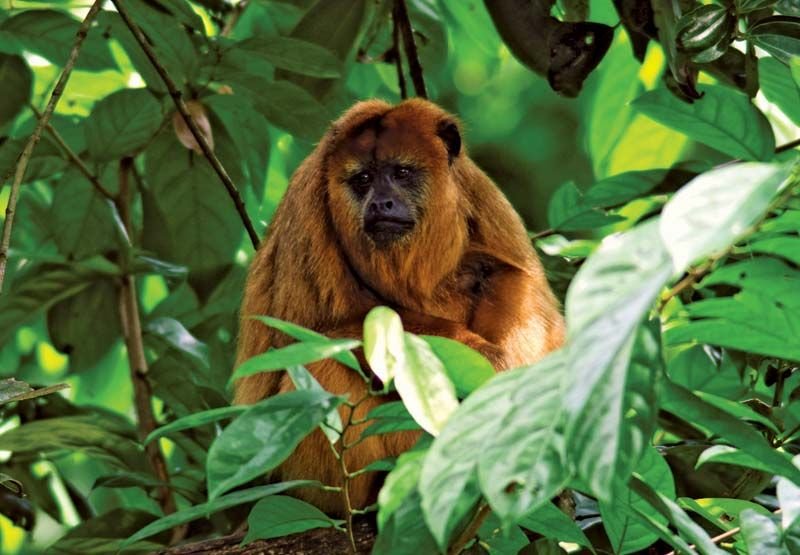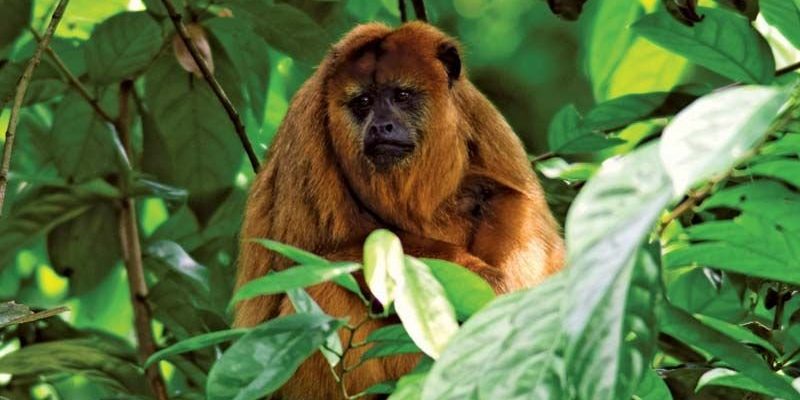
So, where exactly do these lively primates thrive? Guaribas primarily inhabit tropical rainforests, but their distribution is much wider than you might think. They’re not just limited to one area; their range stretches across diverse ecosystems. Let’s take a closer look at their habitats, why they prefer these places, and the regions where you can find them.
Understanding Guariba Habitats
To fully grasp where howler monkeys live, we need to dive into their preferred environments. Guaribas are predominantly found in tropical rainforests, but they can also adapt to deciduous forests and even some mangroves. They thrive in areas rich in tall trees because their diet mainly consists of leaves, fruits, and flowers found high up in the canopies.
Their long tails act almost like a fifth limb, allowing them to expertly navigate among branches while munching on snacks. The versatility of these monkeys is impressive. In addition to dense forests, they can also be found in semi-deciduous forests, where rainfall varies throughout the year. The ability to adapt means they’re not just limited to one type of forest, but can make a comfortable home in varying conditions.
Why Rainforests Matter to Guaribas
Rainforests stand out in the natural world not just for their biodiversity but also for the shelter and food supply they offer. For howler monkeys, these forests are ideal because they provide a rich tapestry of leaves, fruits, and flowers, which are essential for their diet.
You might be wondering why leaves are such a big deal for them. Well, leaves are packed with nutrients, but they’re also tough to digest. Guaribas have a unique digestive system that helps them break down these fibrous foods. Plus, living high up in the trees keeps them safe from many predators. It’s like having a safe dining room perched above the hustle and bustle of the ground.
Where Do Guariba Monkeys Live? Geographic Distribution
Now that we know what kind of habitats they thrive in, let’s explore where you can find these fascinating monkeys. Guaribas are mainly distributed in Central and South America, specifically in countries like Brazil, Colombia, Venezuela, and parts of Bolivia.
In Brazil, you’ll often find them in the Amazon rainforest, one of their most famous homes. But they also roam the Atlantic rainforest along the northeastern coast of Brazil. Here, they face various environmental challenges, including habitat loss due to deforestation. It’s a tough situation for these creatures, as their habitats are shrinking at an alarming rate.
The Role of Conservation Efforts
With their habitats at risk, many organizations are working tirelessly to protect these monkeys and their environments. Conservation efforts focus on preserving their natural habitats and raising awareness about the threats they face. Local communities often play a vital role in these efforts, advocating for sustainable land use to ensure that the guaribas have a place to thrive.
By supporting conservation programs, we can help protect not only howler monkeys but the entire ecosystem they rely on. It’s like working together to maintain a beautiful, interconnected web of life where each species plays its part.
The Social Structure of Guaribas
Aside from where they live, it’s fascinating to explore how guaribas live together. They’re highly social animals, often seen in family groups that can range from just a few members to over a dozen. These groups typically consist of a dominant male, several females, and their offspring.
You might find it interesting that their social structure plays a crucial role in their survival. By living in groups, they can better protect each other from predators and work together to find food. Their loud howls aren’t just for show; they serve to communicate with each other and mark their territory. It’s a unique mix of family bonding and survival strategy.
Adaptations to Their Environment
Guaribas have some amazing adaptations that make them perfectly suited for life in the treetops. Have you ever noticed their strong limbs? Their arms and legs are muscular, allowing them to swing effortlessly between branches. Plus, their prehensile tails are incredibly useful. These tails can grip onto branches, giving them additional stability while navigating their leafy domain.
Their fur is also quite beneficial. It provides protection from the elements, like rain and sun, while also offering camouflage against predators. So, when you’re out in the wild, spotting a howler monkey high up can be quite a challenge—it’s like finding a needle in a haystack!
The Impact of Human Activity on Guariba Populations
Unfortunately, human activities pose significant threats to howler monkeys. Deforestation, urbanization, and agriculture encroach on their habitats, leading to fragmentation. This means that the once continuous forests are broken up, isolating groups of guaribas from each other. Imagine being cut off from your friends; that’s what these monkeys face, making it difficult to mate and find food.
Additionally, hunting and illegal pet trade also threaten their survival. Education and awareness are key to reversing these trends. By understanding the importance of these creatures and their habitats, we can all contribute to their conservation.
Final Thoughts on Guaribas and Their Habitat
Guaribas, or howler monkeys, offer us a glimpse into the wonders of nature, especially when we consider where they live and the ecosystems they inhabit. Their lives are intertwined with the lush tropical forests of Central and South America, making them an integral part of our natural world.
With the myriad of challenges they face, it becomes clear that we need to work together to protect their habitats. By taking steps to support conservation efforts and raise awareness, we can ensure that these unique primates continue to thrive for generations to come. After all, a world without the deep, haunting howls of guaribas would be a little less vibrant, wouldn’t it?

